It is now three days after the start of the Reykjanes eruption. What is the state?
The flow field is slowly expanding, and is thickening. It remains a touristy eruption, but tourism is up and down. Initially it was discouraged as events were still unfolding. On Sunday they came in large groups; our local correspondent commented that half of Reykjavik wanted to come. That caused some problems. The ridge next to the cones were popular, but evacuated around mid-day. In hindsight just in time as a little later a significant collapse of the cone pushed a lava surge in that direction. A video of the event shows it nicely. The ridge is now close to being surrounded by the lava.
https://www.ruv.is/frett/2021/03/21/gigbarmurinn-gefur-sig-og-ny-hraunrennslisaed-myndast
Some people got in trouble last night when the weather deteriorated and they got lost and cold on the 2-hour cross-country walk back. Today the weather was atrocious, and measurements indicated that gas concentrations close up to the lava reached dangerous levels – presumably that was true the previous day as well.
Lisabet, our local correspondent, send some very impressive photos and made many commenters feeling very envious. Click on the image for the full resolution.
The eruption is now concentrated in three cones. The dominant one had the collapse (and may have more to come). The smaller, middle one showed a mystery last night: in addition to the spatter, flames came from the top. They moved in the air exactly like real flames. But it is very unclear what caused it. Apparently this has also been seen in Kilauea. The most plausible combustant would be carbon, picked up from peat on the surface underneath the cone. But this is speculation.
Here is a video showing the f=mysterious flames at Kilauea.
https://www.youtube.com/watch?v=sMMhJUegLsQ
The story about the groups of archeologist doing emergency excavation was overstated. There was only one, trying to do a very quick site survey before it was overrun by lava.
https://twitter.com/beinakerling/status/1373610128855998465
https://twitter.com/astro_graph/status/1374007538857951235
There are now some reports coming out on magma composition, as mentioned in the comments. The magma is a bit less gaseous than Holuhraun was. It originated from a magma chamber 17-20 kilometers below the surface. It may have spend considerable time there (one may guess centuries). This would explain why the lava is a bit blocky, as it will have become more viscous during long-term storage.
We estimated that over the first 24 hour, the eruption rate was roughly 15 m3/s. Today, numbers of 5-10 m3/s were reported. The eruption may have decreased a bit since the initial flush. But it is still going strong, without any indication that it would end soon.
The eruption rate can tell us a bit about how wide the feeder pipe of the eruption is. The magma is pushed up by two effects: buoyancy, and overpressure. The buoyance comes from the fact that the liquid magma is slightly less dense than the solid basalt of the crust. If we assume that this is the only effect, there is a simple equation which sets the flow rate. For a cylindrical conduit, it depends on the radius R, the viscosity, and the difference in density. Putting in the numbers, and assuming a difference in density of 100 kg/m3 and a viscosity of 104 Pa s, gives that a flow rate of 10 m3/s corresponds to a conduit radius of about 3 meters.
If it is overpressure, the numbers change. A rift suggest a dike rather than a spherical conduit. The picture shows the model: a magma chamber at 5 km depth, a flattened conduit going to 1 km depth, and a cylindric conduit for the final kilometer. For a magma overpressure of 20 Mpa, the dike could have a cross section of 500 m2 ( for instance 500 meter long, 1 meter wide), and the conduit t the surface a radius of 15 meters. This also gives a flow rate of 10 m3/s. This model is rather plausible. It allows for several conduits, each feeding a cone. Models of such a situation suggest the possibility of varying eruption rates over a period of weeks to months. (Costa et al., https://doi.org/10.1029/2006GL027466)
We do not expect a sudden end to the eruption in the next day or two (although this can never be excluded!). We are looking forward to days of envious staring at the camera. Reports that a shield may build should be taken with caution. That hasn’t happened here since the early holocene, and a more typical, smaller eruption is more likely. Whatever happens, like Holuhraun, we will learn a lot about how volcanoes work.
And a final point. Today our current VC site reached 4 million views, something the VC team is quite proud of. We try to provide a forum where volcano science and volcano experience can meet. We are glad that VC is appreciated.
The average website has a carbon footprint of 1.8 gm of CO2 per view. That means that VC is responsible for 7200 kg of CO2. How does that compare with the volcanoes that we study? Read
http://www.volcanocafe.org/volcanoes-and-co2-continued/
(and its precursor post https://www.volcanocafe.org/volcanoes-and-co2/ )
There is one volcano that produced less net CO2 than VC: Eyjafjallajokull, now exactly 10 years ago. It managed to offset all its CO2 by causing the flight ban. Icelandic volcanoes never cease to amaze.


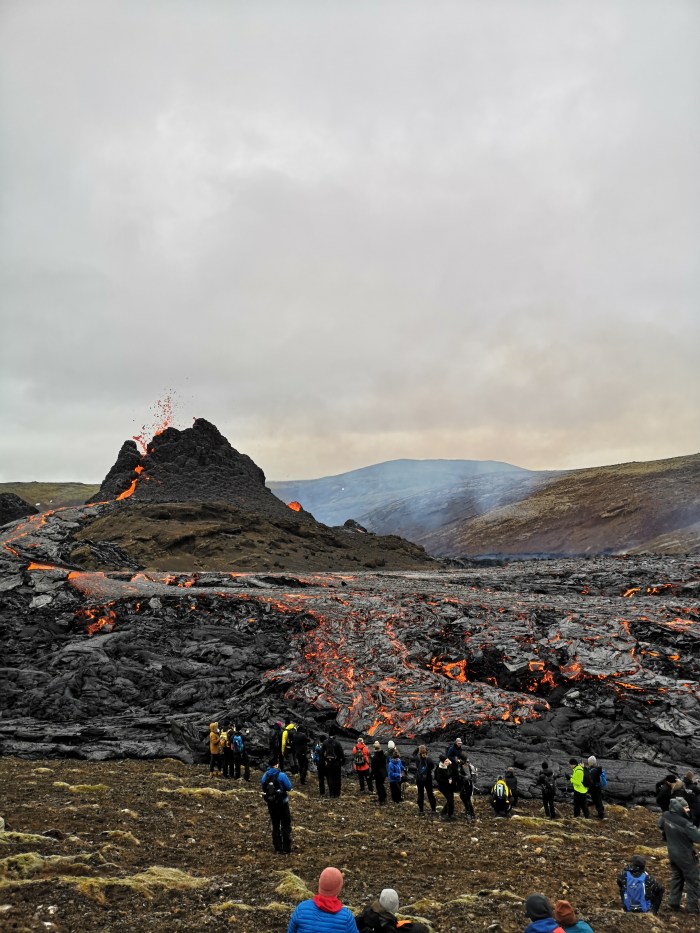
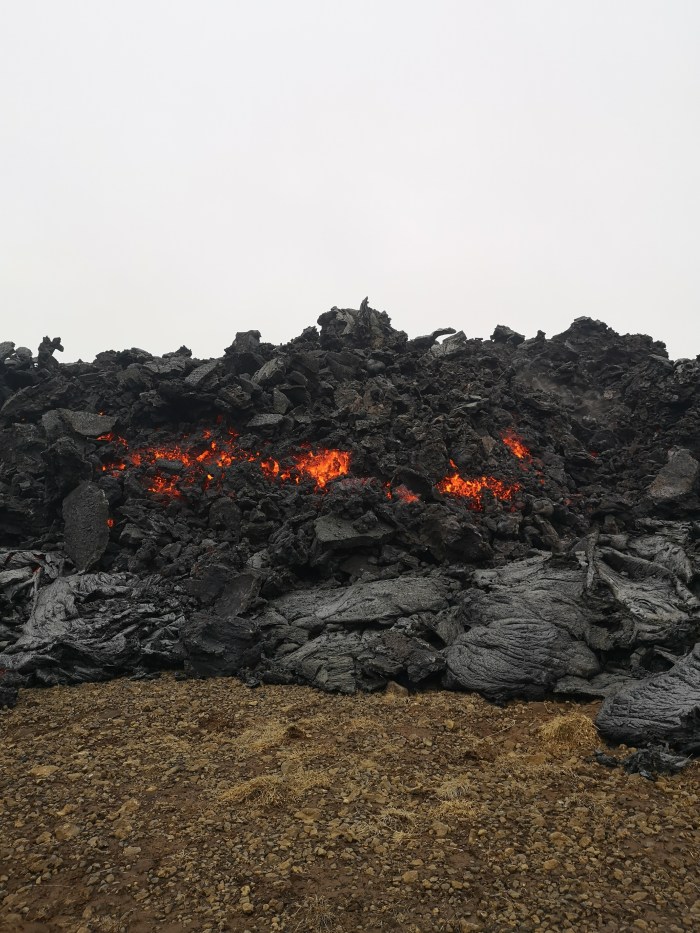




The rear view mbl.is camera is back up.
H All, a new timelapse from about 1325 to 0224 the nest day. A second angle from the webcam from mbl.is is at the end. I cut out most of the parts were the camera switched to thermal and back and where the fed was interrupted.
The changing weather makes it compelling viewing.
https://youtu.be/wh1BfyWqOUo
I can imagine the fed was interrupted….
I meant next day and feed
16:21 approx helicopter landed below cam.
Just the tail is visible now
Looks like earthquake activity has been picking up steadily over the last few hours. Can someone tell me how their location compares to the eruption site? The increased eruption activity that coincides with that suggests that the system appears to be allowing more material to flow through with ease. Could magma be on the move and erupt at a new vent in a more northerly location?
I also noticed the i creased quake activity. Will be interesting to see effects on eruption and if a new vent will open up.
Backsiide cam??? i lost the connection numbers…
mots: second helicopter has landed behind first helicopter below ledge of camera….
hubby: humph (he doesn’t even try to act interested anymore) 😉
mots: now the second heilcopter had leap frogged over the first one and landed again…
hubby: Ok… now stop.
Here you go
https://www.mbl.is/frettir/innlent/2021/03/22/beint_eldgosid_i_fagradalsfjalli/
Oh… Thank YOu.. Thank YOU! Best!motsfo
Last night I watched the drainage channel from the main vent switch from being on the right side, to the middle facing the camera. Today, it is still draining along that channel, but it looks like flying lava is continuing to build the cone even above it.
What is interesting is the 3rd vent on the left, originally it was a glowing vent emitting very hot gases, but today it is spattering a lot, which is new behavior for it. The outline of the cones have definitely change in this side. I also notice that the 2nd vent seem to have gone inactive or perhaps covered by ejected material from the main vent.
However it looks like the lava flow rate is rather constant.
i agree…. the spattering seems to have increased in that ‘lesser’ vent and perhaps will be taking over more ejecta… 🙂 that’s why i wanted the rear view….
Today the lava field has been producing lots of smoke. Is it that a thick lava stays hot for longer and brews and outgasses more than a thin layer?
I think this is partly a visual effect caused by varying illumination but I do not think that explains all of it.
Less wind means the gas hangs around longer
Lava surge @ 17:02 from the main cone
Question on the quakes now, they definitely have increased along the dyke. (17:00 UTC 23-March-2021) Could this show us that when Geldingadalir erupted that it took the pressure off temporarily on the dyke magma (is magma compressible?) but now the flow rate has regain strength over the decompression and we are starting to see this now? I am curious as to what might be happening, as I suspect another eruption point might soon develop along the dyke lineament.
It may just be recency bias, but I am absolutely convinced that the flow-rate has been higher this afternoon compared with yesterday – seems to be much more fountaining happening, especially noticeable from vent 2/3
I totally agree. The gushes are higher and the one on the left of the big one is going nuts.
Question: Could the increased height of the main cone and hydrostatic pressure be causing the vent 2/3 to spatter now as it appears that more pressure is being released now by this cone instead of the main cone?
https://www.mbl.is/frettir/innlent/2021/03/23/beint_eldgosid_i_fagradalsfjalli/
Closeup of the growing spatter cone…
More activity since today, after an 8h gap with very low rate. Notable: The new shallow quakes are mostly from the red group, whereas the deeper quakes are registered in the pink group.
I’ll try to gather more reference points for the map…
Are the red ones the quakes ESE of Fagradalsfjall and SSW of Keilir and the pink the ones east of Keilir?
Sorry, that should have been ENE of Fagradsfjall.
https://twitter.com/simoncarn/status/1374413176138178569
Stronger SO₂ signal in #Sentinel5P #Tropomi data over SW #Iceland on March 23, showing the #Fagradalsfjall #volcanic plume dispersing NE around #Reykjavik. Probably due in part to improved weather & higher plume altitude.
Anyone know how thick one layer of the lava is? Not the entire lavafield, just one new layer of “paint” so to speak.
Only guessing. Near the cone the layer is thicker I think. The lava’s temperature is dropping underway.
Think a piece of glass. If you melt it lying somewhere it wil be about about 6 mm even everywhere. It just flows until it is 6mm thick, then it stops.
Lava will have same habit I guess, no 6 mm ofcourse, but it wil have the same proces. When the lava pool gets the max thickness it will start to flow and searches it way down in lobes, as we see in the sequences.
Shield volcanoes have 5 degrees angle slopes. So the layers are quite thin I think. 2 meters? Wild guess.
It is not lying ofcourse 🤫😬. Sigh.
https://www.visir.is/g/20212088820d/adsoknin-allt-of-mikil-midad-vid-skipulagid?
“The eruption site in Geldingadalur has been successfully evacuated this afternoon, according to the chief warden in Suðurnes. He says it is uncertain whether the area will be open to the public tomorrow, but it is clear that changes will be made to the organization. Today has not been a good day.
The vicinity of the eruption in Geldingadalur was evacuated at 5 pm today, but the Meteorological Office warns that dangerous gases can accumulate in depressions and depressions when the weather calms down. The concentration of gas there could be life-threatening.
Jóhann K. Jóhansson, a journalist, was on the scene in Suðurnes in a live broadcast on Stöðvar 2’s evening news and spoke to Sigurður Bergmann, Chief of Police at Suðurnes.
The evacuation was still in progress when the evening news began at 18:30. Sigurður said that it seemed as if the evacuation of the area had been quite successful. The police had expected that more people would be in the area when the evacuation began.
There was a lot of traffic on Suðurstrandarvegur today, which was opened in the other direction yesterday to facilitate the access of hikers in the area. The line of cars that formed as the day progressed was probably longer than the walking route from Suðurstrandarvegur to the eruption sites.
Depending on whether any measures would be taken to improve the situation, Sigurður said that the situation would be reviewed and a meeting held. “It didn’t work out, it was too much attendance compared to the organization,” said Sigurður.
The plan would be different tomorrow. It remains to be seen whether the area will be open tomorrow. “It is uncertain,” said Sigurður.”
A new diagram of what happened recently in #Reykjanes, #Iceland. #IJsland #Volcanism #Vulkanisme #volcanoeruption #vulkaanuitbarsting #Fagradalsfjall #Geldingadalur
https://twitter.com/IcelandEditions/status/1374394479407329284
A bunch of great pictures in this link
https://www.visir.is/g/20212088736d/ofan-i-auga-gigsins
Clearly some folks who don’t listen to the authorities, but also this is the first pic that I’ve seen that shows how close the exit of the valley is. There might be some perspective cheating thingy going on, but it looks like if the cone wall collapsed towards the exit then it should be possible for the outrushing lava to potentially reach the exit, perhaps not in the first try, but soon after.

Judging by the snowline, the fall of the lava and the height of the people in the foreground. my guess is that a surge to the south producing about six meters of lava could send the flow over the top of that pass. That would be an interesting development.
It would be nice to have a view of that happening. It doesn’t necessarily need to fill the valley first, as has been suggested, it just has to flow in the right direction for long enough.
Strombolian activity started in Etna south east crater, we could have the 16th paroxism in the next hours…
I have both volcanoes live erupting on my computer now 🙂
at the moment i’m looking at this zoom on the crater https://www.youtube.com/watch?v=5O7xo66Pwfw
Still ongoing, strong now.
From Sentinel 2
Etna-show is on. 15th paroxysm? I lost count.
https://youtu.be/ULbuPLm6eNU
No, already the 16th if it holds up. At least a day delayed.
It’s getting dark so I guess I won’t be able to see if a ‘kipuka’ forms as the lava tries to surround the ridge. It’s getting close but it’s too dark from the angles available to see. The third cone on the left (from Fagradalsfjall) has been very active this afternoon and has been exceeding the main cone in activity. It now seems to be creating its very own, much larger, spatter cone and has swallowed-up cone 2 it appears. Tomorrow will reveal all.
There are a couple of lights in the distance to the left. I’m not sure if they are from vehicles or are they new vents opening?
Any idea what the two spots of light on the hill to the East are? They are very bright.
I’ve been looking at them for a while now. They seem to fluctuate a little bit, hard to tell from such a distance though, and the he light is warm, not bluish at all.
OK, they are moving now. False alarm.
It’s two cars. They’re driving off now.
Also noticed those. Refection in camera? Spotlights? Or, new vents??
The growing spatter cone .. becoming sizable
OK, something man-made. They were there an hour ago and half an hour ago but not so bright. They are associated with a moving strobe light so looks like something has been put there – a landing pad or something?
I suppose there are some police guys, 2 cars…stroboscope light on ….just feel sorry for them they stay on main gas way
Nice ‘back side’ screenshot.
Thought that that cam did not work anymore. Good to see it does!
A lot of glow tonight….not only two about to be equal vents but the whole field…what it means that? bigger lava volume , bigger temperature of it? also a lot of vapours, or gas emission? what’s next? domes colapse in one huge vent?
More lava and more steam
The lava flow may have accelerated a bit. You can very roughly judge that by seeing how far the hot lava flows. When the eruption rate declines, the lava flows stop reaching the edge of the flow field. During Holuhraun, the first indication that the eruption rate was declining was that the flow field stopped enlarging. Tonight, the hot flow seems to cover the field comfortably.
Heeeeehäää shhhhsshhhhhhheeeäää!!!
Shhhhhhhhh ( cough .. Gollum!! Gollum! ) coughing
I waaaants to visit the eruption site 🌋
I hopes to go later in May and visit and hike out to the eruption site. I will bring with me family on a lava hike to the vents.
Sssssmeagol haatess.. nasty corona viruses lockdown! ssmeagol wants to see all nasty viruses …. dead …
I keep looking at the ‘before’ view on Google maps and I am wondering if the current cone sits on top of an eroded cone, possibly pre-ice age (see red arrow)?
https://photos.app.goo.gl/ARBjbQEtXVh1zLuP8
I can’t help speculating that the current eruption may have followed a very old pathway up to the surface?
I wondered the same thing, but in the Iceland map we see eroded crags, small outcrops. The google map makes it appear that we are looking at depressions in the ground, when it’s the other way around.
I agree with you, that we have an old pathway or fracture in the ground, and the new dyke finally found the weakest point to erupt.
Also, I wonder if the hill which is adjacent to the new cones, and they partially sit on them is an old cinder cone?
Just curious on what might have been there originally.
Yeah, too bad that time machine (or time viewer) hasn’t been invented yet. It would be neat to look back over long periods of time and see how things developed….
It sure looks like the vent on the far left is trying to shoot for its own spatter cone. Its currently making a very decent effort, I am excited to see how its progress is by the morning.
The existing big spatter cone needs to take a break. the breach in the cone is currently so wide and deep that the level of lava is being lowered so that it does not appear to be as active since fewer splashes make it high up and over the rims. It it cant start to close the current drain, i think the upper walls will start collapsing under their own weight.
we could be looking at a whole new arrangement of volcanoes by the morning.
https://www.earthobservatory.nasa.gov/images/148079/volcanic-eruption-lights-up-iceland
What are those two large lights right below Langjökull? No volcanoes there.
99% sure those are greenhouses
Localteam stream Etna is online.
https://youtu.be/J5-gP40D-Zk
Thanks! I’ve been waiting for local team.
Boris Behncke@etnaboris 4 Min.
Activity is gradually increasing at #Etna’s Southeast Crater, building up toward the 16th paroxysmal eruptive episode in little more than five weeks. Loud detonations audible in the southern sector of the volcano. View is from home in Tremestieri Etneo
https://twitter.com/etnaboris/status/1374477710093737987?s=20
It’s somehow like the people live close to the sea a never go to the beach, isn’t it?
Awesome paroxysm!
Absolutely stunning!!!!
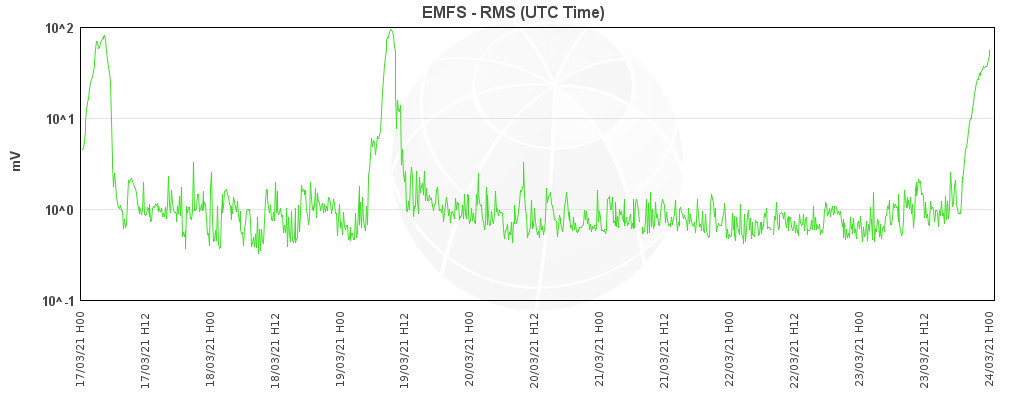
First I thought it wouldn’t be that strong as Etna is already deflating for some weeks. But no: pressure is still building up.
Kudos to good old Etna! After watching this amazing Iclandic toddler in its hot wet diapers it’s for a change very cool to see a grown-up doing its thing, lol.
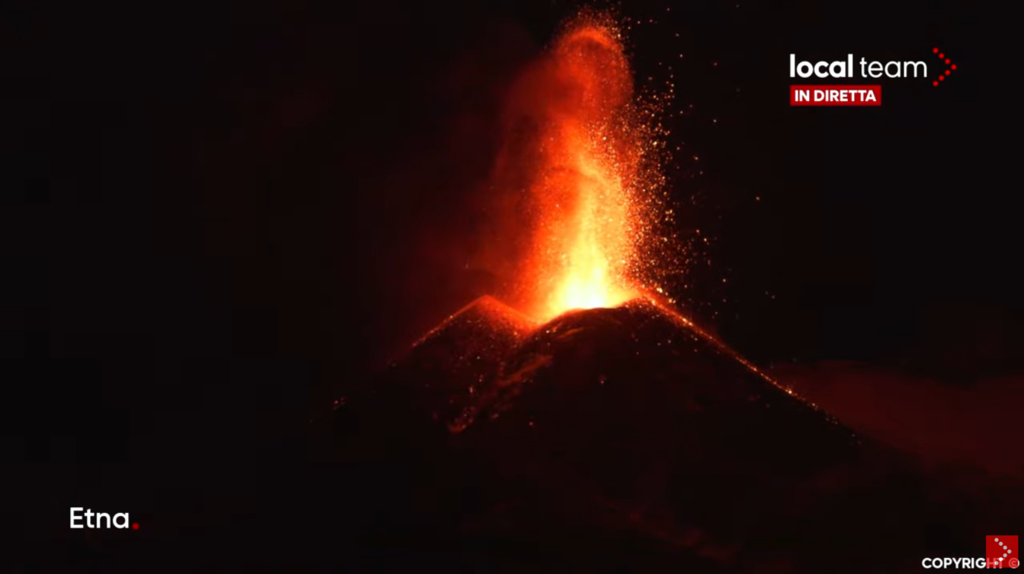
Etna with moon. We are getting soooo spoiled!
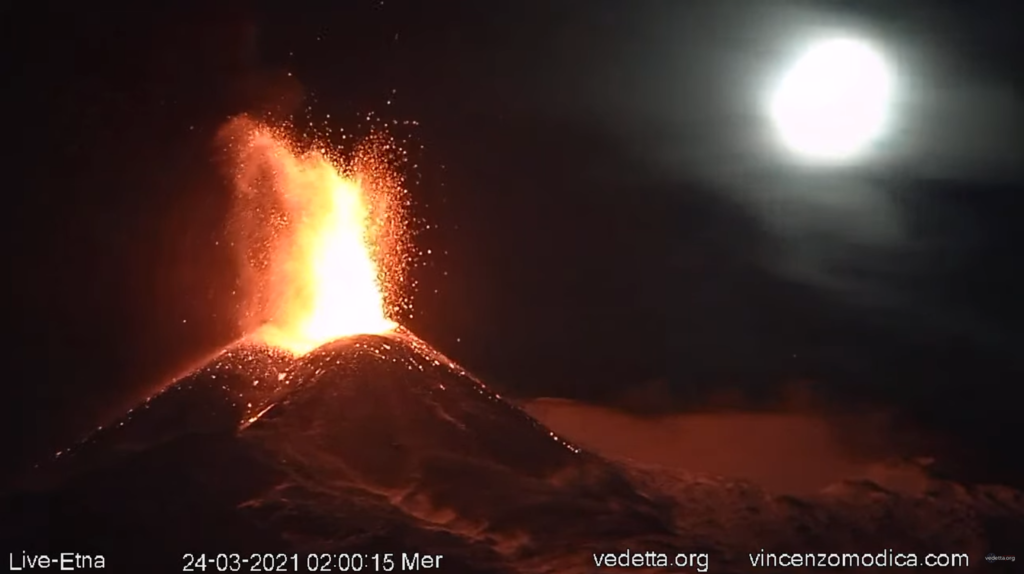
It seems strange that there is no sign of lava flows yet. As far as I know paroxysms are always accompanied by lava flows, and yet this is clearly a paroxysm but nothing yet, it sure is taking up time for it to get serious.
Yeah, I wonder about that too.
Maybe all the lava is getting blown up this time?
Sometimes lava flow shows up very late though.
I have a book somewhere–a USPS Professional Paper–which covered the first twenty episodes of the Pu’u ‘O’o eruption. The episodes with the highest fountains had the smallest flows in both area and volume.
Do facebook links work?
Here’s a shot from just outside of my little village.
https://www.facebook.com/photo?fbid=10225134095360668&set=a.1127352625176
That link doesn’t work.
Right click on the image you want, copy the image or image link, paste it into imgur.com takes a second. Then copy the image link from there make sure it ends in .jpg or .png then post that link here.
https://twitter.com/sandrasnaebj/status/1374445807621992461
Amazing work by Institute of Earth Sciences
@uni_iceland
: Results published on day #5 of the ongoing eruption revealing the primitive origin of the magma at the crust-mantle boundary at ~15 km depth, much deeper than historical eruptions in Reykjanes
Similarities to a 32-year-long eruption in Hawaii
https://www.mbl.is/frettir/innlent/2021/03/23/likindi_vid_32_ara_langt_gos_a_havai/
The eruption site can be seen very clearly in the capital and surrounding areas tonight.
Quite stunning.
Apparently the two smaller vents may have joined into one.
https://www.visir.is/g/20212088887d/gosid-aldrei-sest-jafnvel-fra-hafnarfirdi
The last few minutes, the activity has increased quite significantly. It looks like plenty of overtopping on the front camera, but the sensitivity is truned up so high, that there aren’t any details visible.
It looks spectacular! It is always hard to judge activity from infrared cameras as the lava is so bright. But the fountaining is notable.
Its not an IR camera, LED torches appear blue. Have emailed the RUV contact person, the camera needs tweaking.
Tonight at 4 am looks like a reprise of last night 4 am Maybe a 24 hour cycle of activity?
The splashes can be seen in much better detail on the other cam facing the backside. I would say activity has increased a lot this evening.
Does the bright cold white light on the VIS cams or in the eyewitness reports, which is diffusing and/or reflecting in the clouds/steams/smokes originate in the burning Magnesium (Mg), which is in an large content of this magma? Metallic or in an other reducing state (MgS, MgCl2, MgH2, etc.)?
https://youtu.be/r7OdQGns_ts
Lava tells you only the half truth what’s going on down there where we never were…
#MagmaSub
At the current rate of eruption 5-10cubic-m/s it is estimated that the valley will be filled in 8-18 days, and the lava will escape. https://www.ruv.is/frett/2021/03/23/hraunid-gaeti-flaett-ur-dalnum-a-8-til-18-dogum
The main camera seems to be quite over-exposed, and the lens cover is smeary. The result is an over-blown lava-geddon The back one is more balanced. It’s a shame the powers that be cannot improve the original main camera view because it could show much more detail.
Balanced or not but on the back cam is the same almoust white lava, plus the wind that spread the gas/vapour toward first one…the fog made the clogged wiev. Regarding the lava fountain color today is white not yellowish..as was yesterday….is brighter…that’s my opinion, i’m not an expert
Briefly switched to sensible exposure at 00:30:40
yap but the hd quality cannot be beaten, backstage arena is better prep
Well at least the “front” camera is no longer oscillating between colour and black and white with massive flare in between as it did at night initially 🙂
Screenshot
agree. if we all email the RUV person responsible maybe they will act. email adddress is jsut below video frame
http://earthice.hi.is/sites/earthice.hi.is/files/characterization_of_the_1st_and_2nd_day_of_volcanic_products_from_geldingadalahraun_2021.pdf is the link to the scientific paper on the analysis of the lava. It appears that we have volcanic glass layers being laid down by this fissure eruption. I was fascinated reading this paper, a lot of great information embedded in lava (and the paper too)
One important note, the paper notes a lot of sulfur contained in the melt, thus indicating that SO2 will be a major issue when dealing with dangerous volcanic gases. Perhaps burning sulfur vapor was the flame which we saw in the #2 vent (since deceased) ?
What’s about the volatile heavy metals in the air?
It’s a slower death compare to SO2/CO or to too much CO2 or better no oxygen but faster than without…
Two nights ago the third vent also had flames.
It seems to have gotten quite smokey/steamy/foggy all of a sudden.
You can the back side here: https://www.mbl.is/frettir/innlent/2021/03/23/beint_eldgosid_i_fagradalsfjalli/ but both cones are spattering significantly now.
Anyhow a lot of action in backstage…as far as I can consider acordingly to my space view of the lanscape if i’m correct about the backstage cam angle i thnik that we’ve got a lava vein escaping from the valley…small one that didn’t do it yet so far and starts to cool itself but aiming toward the out pasage
She’s really going for it tonight, it will be interesting to see the extent come morning. 😁
I magine the whole show like a stan and bran capodopera …stan (the naughty small one) and bran the main vent….let’s see the morning capodopera..
I went back today, the crater was noticeably bigger and I also thought that there seemed to be more lava coming out than on Sunday. Waited for it to get dark on top of one of the mountains nearby (upwind) haha. It was amazing in the darkness. Will try and post pics tomorrow
I saw an interesting article on mbl comparing the eruption to the 32 year long eruption in Hawaii. Maybe y’all will get to see it 😛
https://www.mbl.is/frettir/innlent/2021/03/23/likindi_vid_32_ara_langt_gos_a_havai/
If this lasts even a year, you can expect lava flights to come in to Keflavik from all over. Land, see lava, visit blue lagoon, fly back, perhaps even time for lunch.
Meanwhile, Etna is on paroxysm (or it strombolian activity) #16.
https://www.youtube.com/watch?v=ULbuPLm6eNU
It seems to have a very consistent source of magma that it is able to replenish every 2-3 days.
what a glorious night of having both Reykjanes and Etna going full steam.
Taal has just had 263 tremors and it’s still going through some inflation, what could be on the cards for our Tiger?
Fagradalsfjall: “When I grow up, I want to be Etna”
The two cones are really emitting volcano smoke vociferously now, and it appears that they are somewhat synchronized with the really big puffs of smoke. The 3rd vent seems to be emitting perhaps more gas than the main vent – 02:45 UTC 24-March-2021.
Watching Mt. Etna at the moment ..
Lava flow on the left beginning to head down slope ..
Any guesses on how high the lava bombs are being tossed ??
https://www.youtube.com/watch?v=ULbuPLm6eNU
View in “theater mode”
Hah – I was trying to guess based on time for some of the bombs to drop from the apex, those nearing the top of the screen seem to be falling for over 12 seconds to crater level, so maybe 500m, but then there’s a burst of activity and lava bombs are still moving fast while disappearing off the top of the screen.
It’s a spectacular show.
We have the views from the two webcams (aka ‘front’ and ‘back’), and now we have a snapshot of what it looks like from the top:
curtesy of the Operational Land Imager (OLI) on Landsat 8 and the NASA Earth Observatory.
Did someone just turn that thing up to 11?
This is the most intense activity I have seen so far.
It was similarly very active 24 hrs ago, 2-4am Tuesday